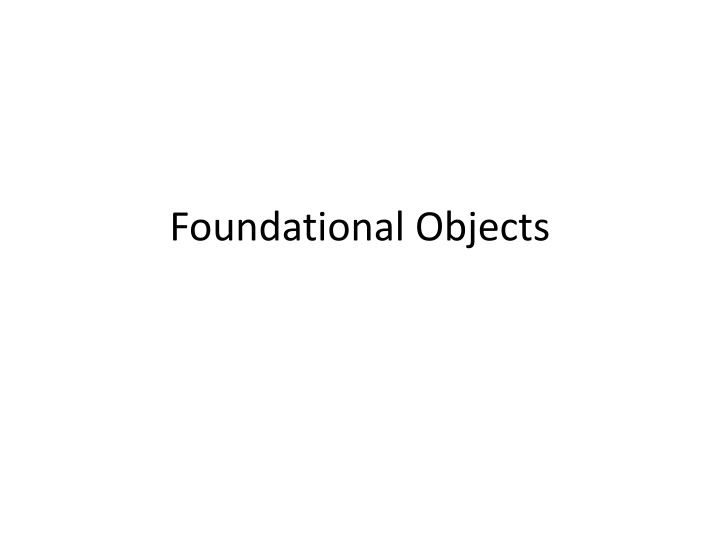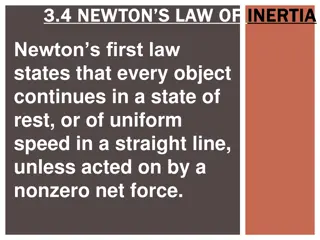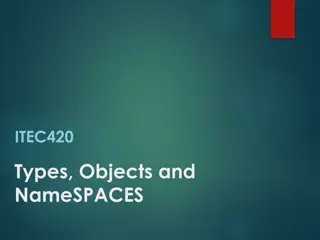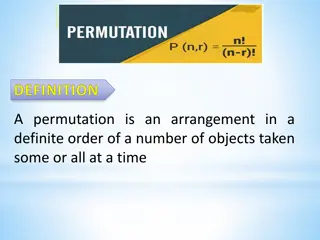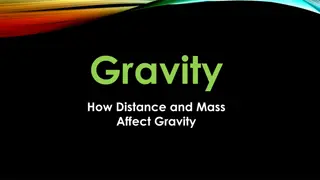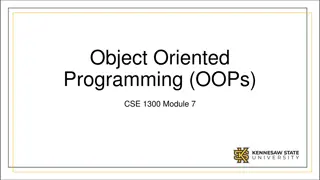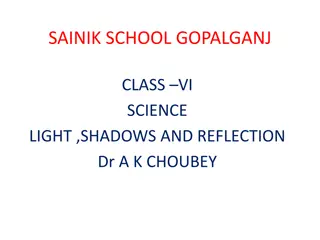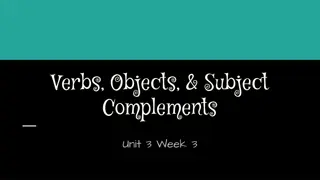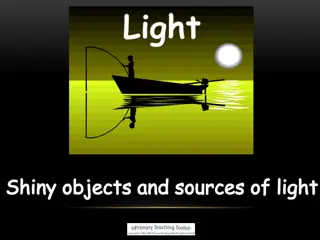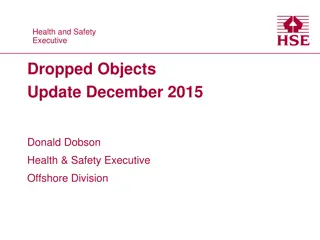Foundational Objects
The importance of foundational objects in metadata and data files, their characteristics, and roles in high-level processes. Learn about key concepts, structures, and requirements for creating effective foundational objects.
Download Presentation

Please find below an Image/Link to download the presentation.
The content on the website is provided AS IS for your information and personal use only. It may not be sold, licensed, or shared on other websites without obtaining consent from the author.If you encounter any issues during the download, it is possible that the publisher has removed the file from their server.
You are allowed to download the files provided on this website for personal or commercial use, subject to the condition that they are used lawfully. All files are the property of their respective owners.
The content on the website is provided AS IS for your information and personal use only. It may not be sold, licensed, or shared on other websites without obtaining consent from the author.
E N D
Presentation Transcript
Areas of coverage Technical objects Foundational objects Lessons learned from review of Use Case content Simple Study Simple Questionnaire First level extensions (Codebook content )
Technical Objects Identification, versioning, reference, etc. Structures for strings Structures for dates Structures for controlled vocabularies Etc.
What is Foundational Objects required as basic parts of more complex constructions Concepts, universes, categories, data element/represented variable Objects required for high level search and discovery Citation, abstract, contents, coverage, etc.
Is it foundational? (could be a candidate) High level process metadata Requirements for the process (inputs) What the process entailed Who did it When was it done Criteria for completion Results (outputs) Organization and Individual information and relationships
Foundational Object Characteristics KISS principle: Keep it simple stupid A Foundational object should have enough content to relay full basic useful information for a simple use case Structured to serve as a base for extension Extension adds more detail to support more complex use cases
Review of Use Cases Discovery information for metadata AND data file Citation Abstract Coverage Temporal (reference date and related subject) Topical (subject and keyword) Spatial (description) For spatial search engines (bounding box, spatial object, lowest level and geographic date) Collection content What things make up a study and how do they relate to each other
Review of Use Cases (cont.) Provenance Who owns it Where is it from How did it change Actors, Events, Objects Who can access, how and when
Review of Use Cases (cont.) Simple data file Variable Name Physical Location Data type Representation (valid and invalid-missing) Source Concept Universe
Review of Use Cases (cont.) Simple questionnaire Population Universe Sample (frame, methodology, management) Question Intent Text Response domain Sequencing (simple) Concept
Simple Case: Simple Study Description of a simple data set tying together the following content: Data item (label, location, data type, etc.) Basic discovery information Universe Concepts Code lists
Simple Case: Simple Questionnaire Description of a simple questionnaire covering: Simple questions (question intent, text, response) Non-complex question flow Information on the population responding to the questionnaire (universe, sample, weights, methodology, etc.) Concepts
First Extension: Scope of the Codebook Case Elements most commonly used from existing profiles CESSDA ICPSR IHSN This is for the description of a simple study First level extension from fundamental objects
